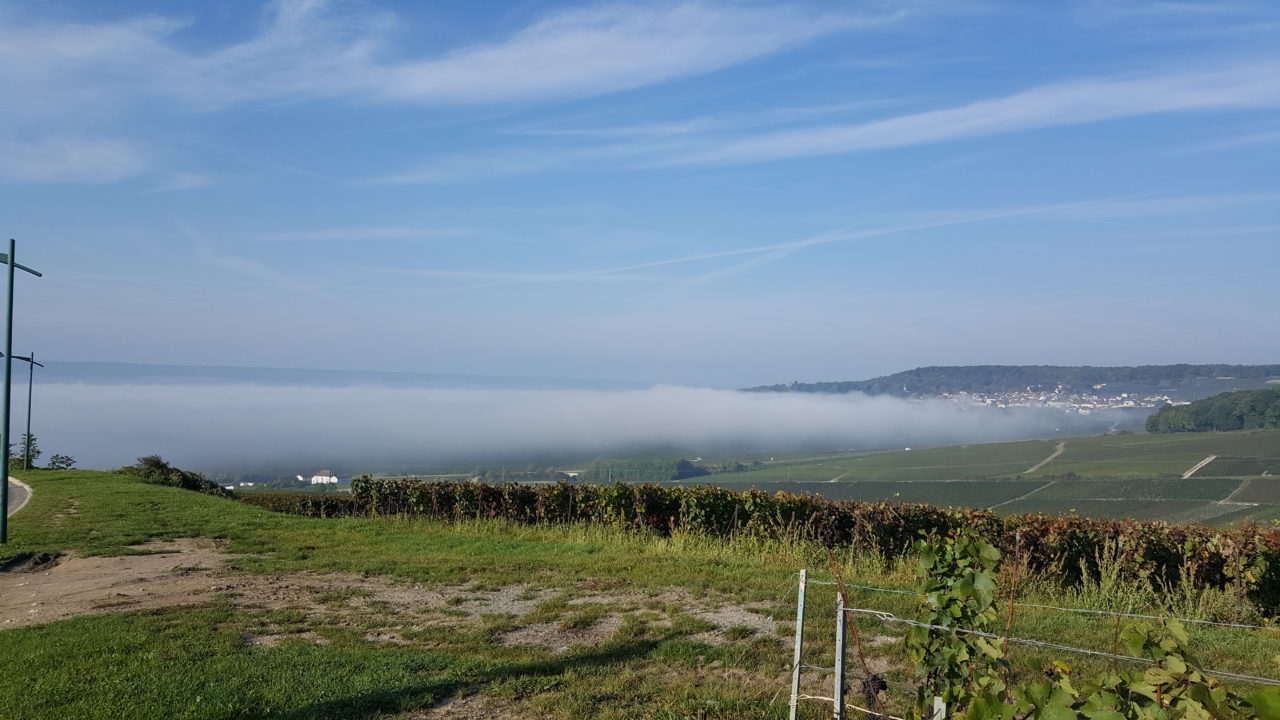An insight from my friend Sébastien Lebon, a contributor to The Bubbles Review. Born, raised and still living in Champagne, Sébastien provides us with some bubbly snippets, direct from the source. I asked Sébastien to share some insights on what it is like to be in the region for harvest.
Harvest in Champagne
“The calm before the storm” – This is what we might say when wandering in the Champagne vineyard just before the beginning of the harvest. Everything is so quiet and all of a sudden…more than 100 000 seasonal workers land on the chalky ground of the region.
Within more or less 3 weeks, they will pick the equivalent of 35 000 hectares as it is strictly forbidden to use machines. The C.I.V.C. (Comité Interprofessionnel du Vin de Champagne) decides for each wine village or “cru” (320 in total) when the grapes can be gathered. For instance, picking usually starts earlier in the south of the region since the climate is a bit warmer so the grapes will be ripe sooner than in the north. In a qualitative approach this organisation also limits the yield per hectare (10 800 kg/hectare in 2018).
Several factors are considered before commencing: the acidity, the level of sugar and the health of the grapes are the most important. Some samples of grapes from each village are analysed before making any decision.
The work is tough and painful and must be done efficiently regardless of what the weather conditions are. To regain their strength, pickers wait for the morning break: coffee (or champagne!), pâtés en croûte (terrine wrapped in pastry) and maroilles (cheese) pies!
Once the grapes are collected, they are taken to a presshouse. There are presshouses all over the region because we do not want to damage the grapes during a long transportation. It is not unusual to find that traffic is busy and slow in September as the roads are filled with tractors carrying these precious fruits!
Pressing, it is done very softly to avoid colouring the white juice with the black skins of Pinot Noir and Meunier grapes. Then the juice is collected in decanting vats and after a few hours, the first alcoholic fermentation starts!
After days or weeks of hard labour, you know harvest comes to an end when you can hear in the distance cars and tractors honking. Tradition also warrants the vans to be decorated with vines. The “cochelet” is the name given to the big party thrown to celebrate the end of this intense period where champagne flows freely!
I am sure you are wondering how last harvest was… well it was exceptional! In recent years, harvest has begun earlier than usual and in some parts picking has begun in the earlier ripening villages in late August, recent harvests have shown the quality was very high for any type of grape! 2018 was definitely a harvest everyone will remember. Let’s hope it is the same for this year, and that the winter and spring tastings of vins clairs (clear still wines) will meet our expectations!
Update for 2022 –
The Comité Champagne explains that the 2022 season is characterised by warmth, with robust ripening dynamics, and wonderful well being situations, and it has the potential to be similar to the very good trilogy of 2018-2019-2020, after the troublesome 2021 season.
And that is why it has set a yield of 12,000 kg/ha for the 2022 harvest. That is the best yield in 15 years (2007).
 Sébastien Lebon was born, raised and continues to live and work in Champagne. Lucky him! He has worked in a range of roles for some of the big champagne houses as well as grower champagnes. His favourite champagne quote is by Sir Winston Churchill: “Magnum is the best size for two gentlemen to share over lunch, especially if one of them is not drinking.”
Sébastien Lebon was born, raised and continues to live and work in Champagne. Lucky him! He has worked in a range of roles for some of the big champagne houses as well as grower champagnes. His favourite champagne quote is by Sir Winston Churchill: “Magnum is the best size for two gentlemen to share over lunch, especially if one of them is not drinking.”
If you liked this you may also like these other blogs from The Bubbles Review:
Come quickly. I am drinking the stars!
Like to keep following us? Sign up to The Bubbles Review list and you will be included in our Subscriber prize draws. The giveaway is usually a chance to win a lovely champagne or sparkling gift. Join our list!
